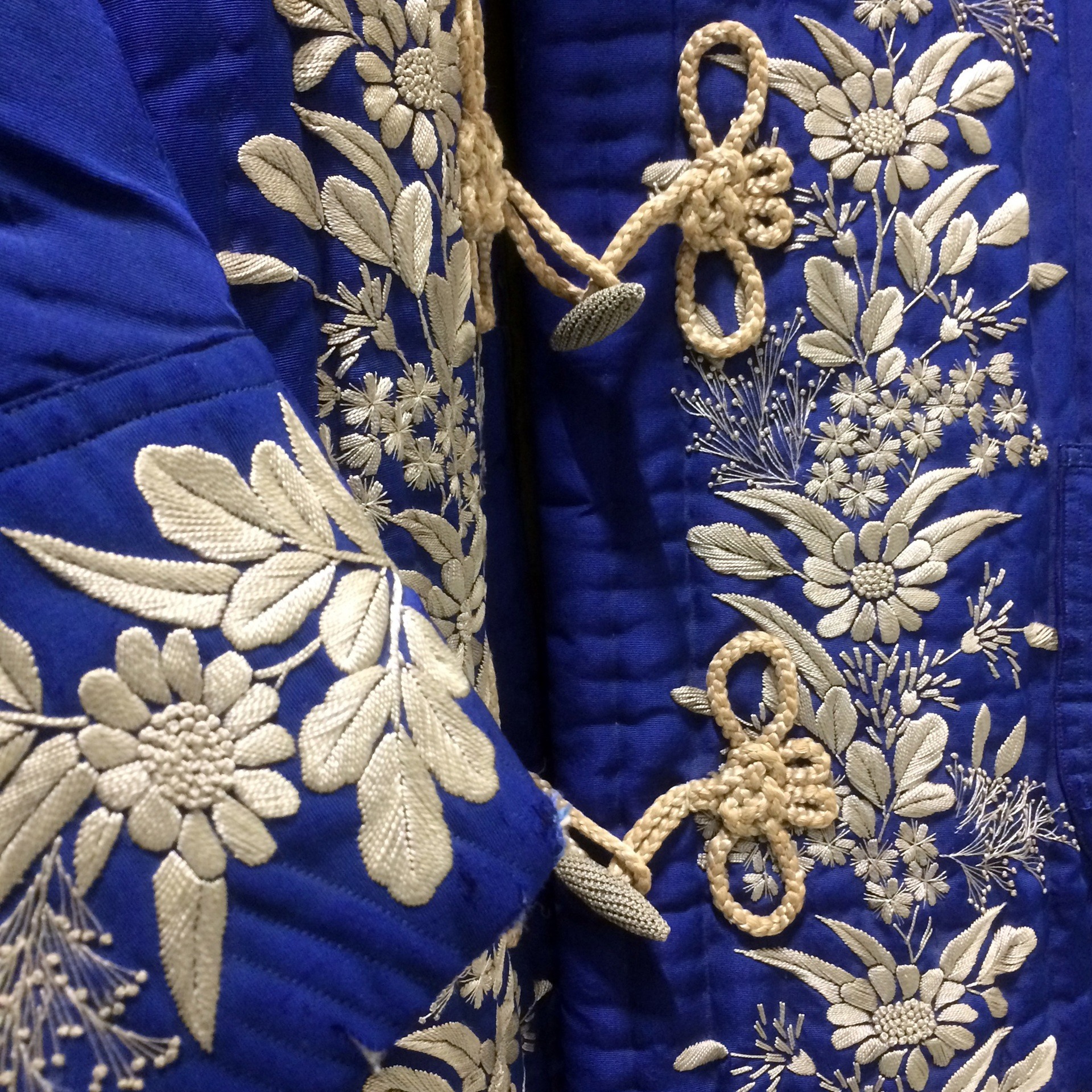In the Fries Museum you will discover that embroidery is of all times and for everyone; young and old, man and woman! Nearly 150 garments and accessories prove that embroidery is more than decoration; it shows who you are. In the exhibition Haute Bordure you can marvel at four centuries of handmade embroidery in Dutch fashion. From a spectacular catsuit by Jan Taminiau - stitched from head to toe with sequins - to gold-threaded shoes from 1620, and from rustling roaring twenties dresses to 18th century men's cardigans with meticulously embroidered details. A must-visit for fashion lovers and textile fans.
Visitors discover the richness associated with embroidery, with luxurious materials such as gold thread, silk and pearls, as well as the craftsmanship and the hundreds of hours sometimes needed to decorate a garment. Embroidery can be worn to express group affiliation or to stand out from the crowd. Moreover, fine white embroidery is worn at important moments in life such as births, baptisms and marriages. But above all, embroidery plays an important role in the latest fashions, with which women and men have been making a statement for centuries.
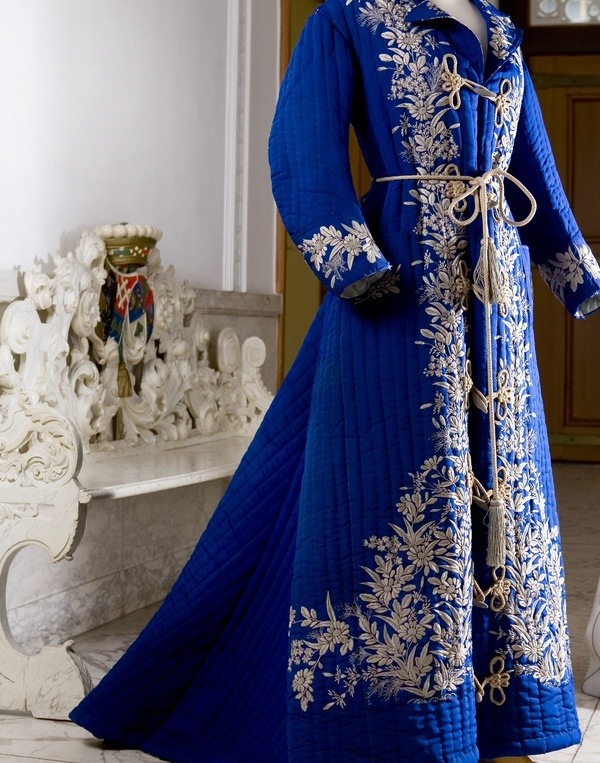

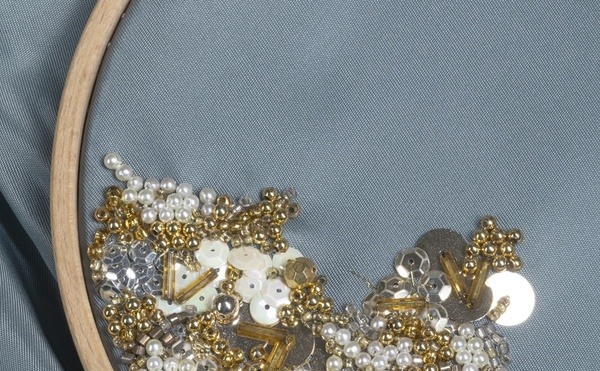
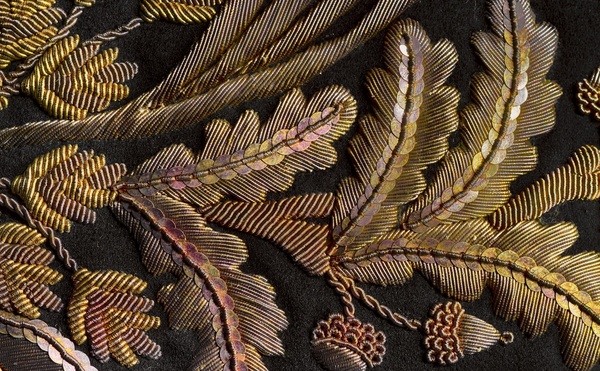
see and be seen
Embroidery in fashion has a long tradition and was once reserved for the church and the elite. Labour-intensive craftsmanship and the use of luxurious materials made embroidery a precious status symbol. Increasing prosperity in the 17th-century also allowed citizens to show off richly decorated accessories. Professional embroiderers applied themselves to complex designs and developed an enormous variety of stitches and techniques. Their creations found their way into the Dutch fashion scene and men and women of all ages distinguished themselves with unique clothing, as is still the case today. For example, the exhibition features a spectacular evening dress by Claes Iversen, studded with Plexiglas, metal and Swarovski crystals; and a catsuit by Jan Taminiau, sewn with sequins from head to toe. Customising outfits is also popular in streetwear and on social media, in reaction to the uniformity of mass-produced clothing.
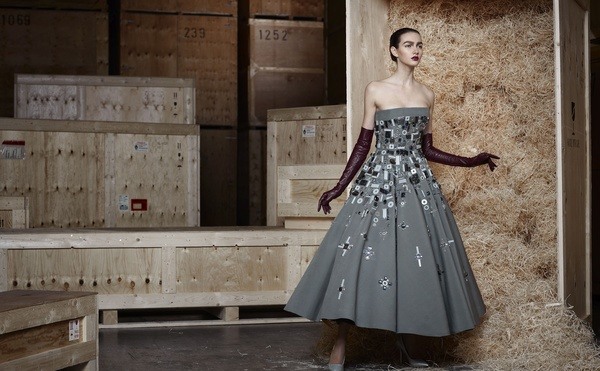
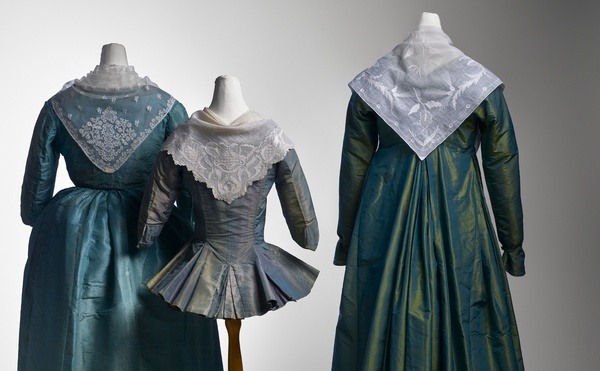
get to work yourself
In addition to the exhibition, the Fries Museum has organised an extensive programme of related activities. Everyone, from beginner to expert, can contribute a stitch or two to the interactive embroidery installation by artist Floor Nijdeken in the foyer of the museum. In addition, a number of embroidery master classes will be organised in cooperation with Crafts Council Netherlands that are aimed at lovers of textiles, fashion and crafts with some embroidery experience. Additional activities will be announced on the museum’s website in the near future.
mix of historical and modern
More than 100 historical and contemporary pieces will be displayed in six rooms. The museum’s unique collection will be enriched with many historical and contemporary pieces from Rijksmuseum Amsterdam (Amsterdam), Royal Archives and Royal Collections (The Hague), Amsterdam Museum (Amsterdam), Centraal Museum (Utrecht), Groninger Museum (Groningen), Kunstmuseum Den Haag (The Hague), Zeeuws Museum (Middelburg), Zuiderzee Museum (Enkhuizen), Museum Rotterdam (Rotterdam) and various contemporary designers. Paul Toornend designed the exhibition; the graphic design is by Michaël Snitker.
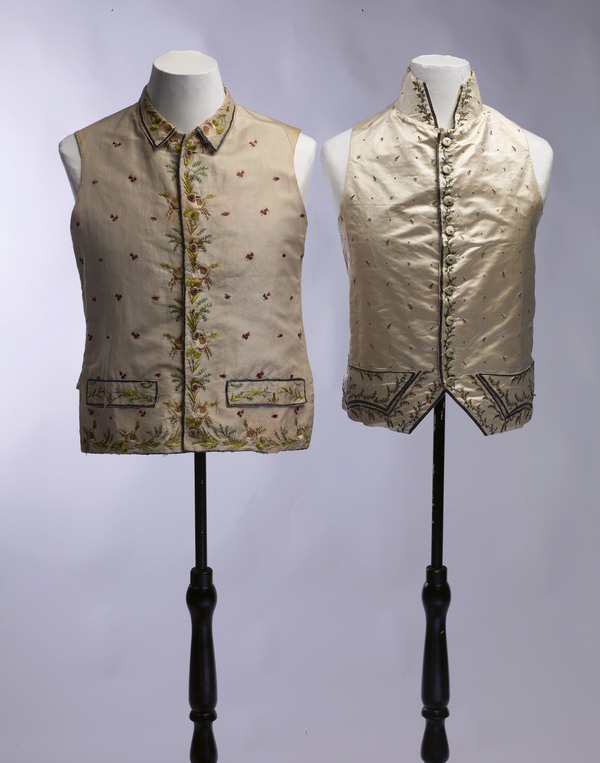

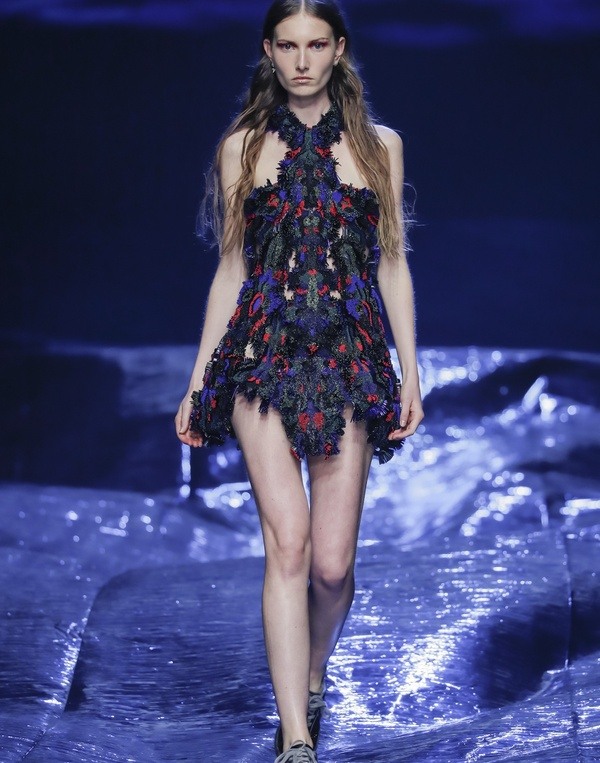

The exhibition Haute Bordure is made possible by Kickstart Cultuurfonds, the Mondriaan Fund, the Prins Bernhard Cultuurfonds and the Margarethe Petronella Fonds, VSBfonds and Fonds 21. Some long-term loans come from the collections of the Ottema-Kingma Foundation and the Royal Frisian Society. Some of the exhibited objects wereeen restored with the support of the Wassenbergh-Clarijs Fontein Foundation.
The Fries Museum is part of Modemuze an online platform that provides a comprehensive overview of Dutch fashion and costume history. Curators share knowledge about fashion on the website which also facilitates the distribution of jewellery, fashion, costume and regional costume collections in the Netherlands and Belgium.
The Fries Museum is co-financed by the the Province of Fryslân, the Ministry of Education, Culture and Science, the Municipality of Leeuwarden, the BankGiro Loterij and the Ir. Abe Bonnema Foundation.
